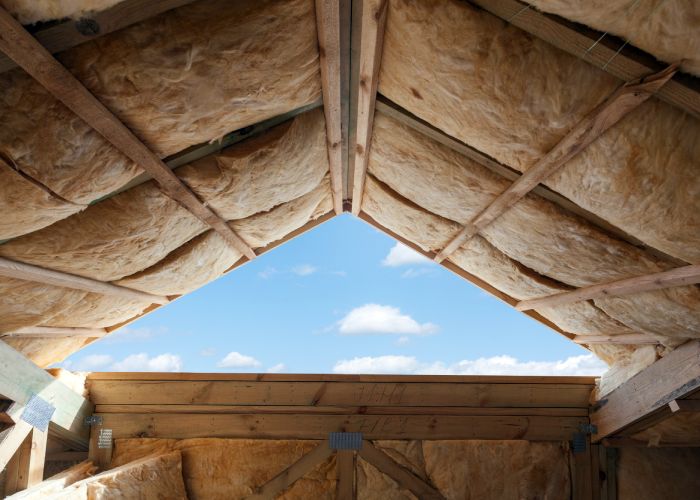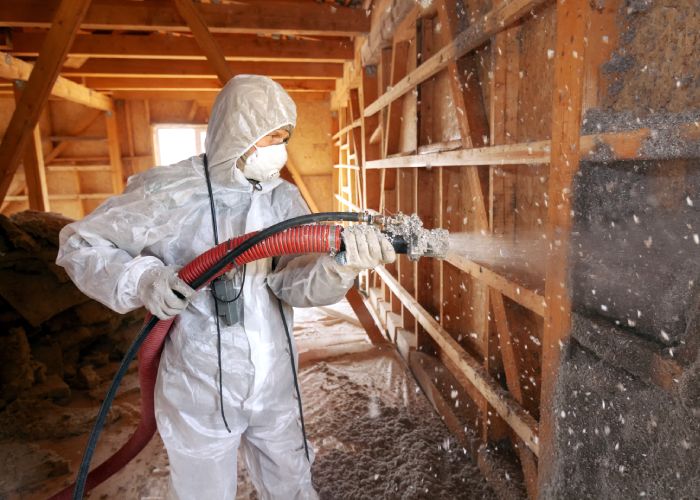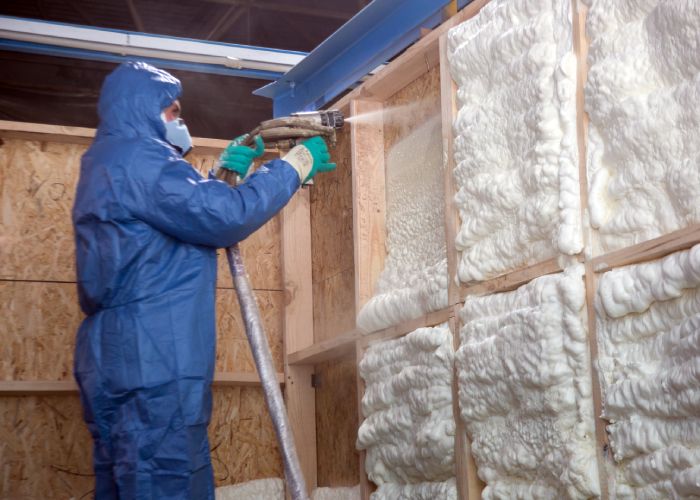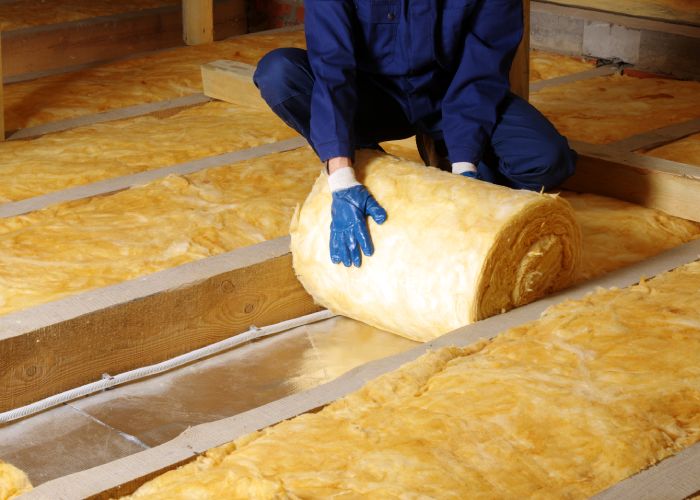Building a new home offers the opportunity to incorporate the most efficient and sustainable insulation options. Insulation is critical in maintaining a comfortable indoor environment while reducing energy costs and minimising the environmental impact.
Homeowners must consider factors such as R-values, material sustainability, and the region’s climate when choosing the best insulation for their new construction.
This guide will explore the top insulation options, detailing their advantages and things to remember during selection.

Fibreglass Insulation
Fibreglass insulation is one of the most popular and cost-effective options for new homes. It consists of spun glass fibres that trap air, creating a thermal resistance layer.
Its economical price and ease of installation make it a top choice for many homeowners.
However, fibreglass can irritate the skin, eyes, and respiratory system, requiring proper protective gear during installation. Also, it tends to settle over time, reducing its effectiveness in insulation.
To maximise the benefits of fibreglass insulation, homeowners can opt for high-density varieties with thicker layers or combine them with other types of insulation for improved efficiency.

Cellulose Insulation
Cellulose insulation is a sustainable option from recycled materials such as newspapers and cardboard. It also offers excellent thermal resistance, comparable to fibreglass insulation.
One of the main advantages of cellulose is its ability to reduce air leakage and noise transmission, making it ideal for soundproofing. However, it can settle over time, requiring occasional top-ups to maintain optimal performance.
Additionally, homeowners must ensure proper ventilation when installing cellulose insulation as it can absorb and retain moisture, leading to mould or mildew growth.

Spray Foam Insulation
Spray foam insulation is a versatile option that expands when sprayed onto surfaces, creating an airtight barrier against heat loss. Spray foam thickness offers the highest R-value among all insulation types and effectively fills gaps and crevices in walls, attics, and crawl spaces.
However, spray foam insulation is more expensive and requires professional installation. It also contains chemicals that may emit volatile organic compounds (VOCs) during application, so proper ventilation is crucial.

Mineral Wool Insulation
Mineral wool insulation is made from natural materials such as rock or slag fibres and offers excellent fire resistance and soundproofing capabilities. It has a higher R-value than fibreglass and is non-combustible, making it ideal for fire-prone areas.
However, mineral wool insulation can be more costly than other options and may require professional installation due to its density. It also has a higher carbon footprint compared to cellulose or fibreglass insulation.
The Importance of Proper Insulation for a New Home
Choosing the best insulation for a new home is crucial in ensuring comfort, energy efficiency, and sustainability. Insulation helps regulate indoor temperature, reduces energy consumption by up to 50%, and minimises carbon emissions.
Homeowners must also consider the region’s climate when selecting insulation options. For example, homes in colder regions require higher R-values to combat heat loss, while those in warmer regions can benefit from insulations that offer additional ventilation.
Moreover, proper installation and maintenance of insulation are essential in optimising its performance. This includes sealing any air leaks, regularly checking for moisture buildup or damage, and topping up settled insulation.
Additional Factors to Consider
- Material Safety and Health Impact: When selecting insulation materials, it’s important to consider their impact on indoor air quality and their potential health risks. Some materials can release harmful pollutants or irritants. Therefore, homeowners should seek options with low or no VOC emissions and avoid those known to cause allergic reactions.
- Environmental Impact and Sustainability: Sustainability is increasingly important in building practises. Homeowners should consider the environmental footprint of the insulation material, including its production process, whether it’s made from renewable resources, and if it’s recyclable at the end of its lifespan.
- Long-Term Durability and Maintenance: The expected longevity of insulation materials can vary significantly. It’s essential to choose options that maintain their insulative properties over time, resist pests, and are less prone to mould or moisture damage, reducing the need for replacement or maintenance.
- Ease of Installation: The complexity of installing insulation can affect the overall cost and disruption during construction. Materials that are easily and safely installed without specialised equipment or training can be more cost-effective and provide more installation flexibility.
- Compatibility with Home Design: A home’s structural design can influence the suitability of certain insulation types. For example, homes with timber frames may require different insulation than those with steel framing due to thermal bridging and moisture management.
- Cost Effectiveness: Initially, the most economical option may seem appealing, but it’s important to consider long-term energy savings versus upfront costs. Investing in higher-quality insulation with better thermal properties could result in greater savings on heating and cooling bills over time.
- Building Codes and Regulations: Compliance with local building codes and regulations is mandatory. Insulation must meet specific requirements for fire safety, thermal performance, and sometimes resistance to natural disasters such as earthquakes or floods. Homeowners should consult with professionals to ensure insulation choices meet all necessary standards.
- Noise Control: Properly installed insulation can also help reduce noise transmission between rooms or from outside sources, creating a more peaceful and comfortable living environment. Some materials, like cellulose or mineral wool, offer better soundproofing properties than others.
Conclusion
In summary, choosing the right insulation for a new home involves considering factors such as thermal resistance, cost, environmental impact, and ease of installation. Homeowners must also ensure proper ventilation and maintenance of insulation to optimise its performance and longevity.
Consulting with professionals can help navigate the various options and ensure compliance with building codes and regulations.
Homeowners can create a comfortable, energy-efficient, and sustainable living space with the right insulation choice. So, it’s essential to carefully evaluate all factors and make an informed decision for a well-insulated home.




